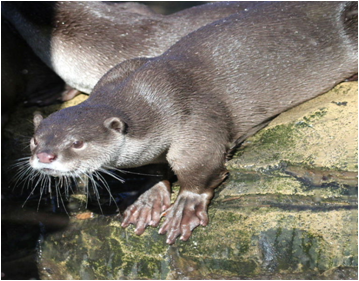

12th August 2025 (13 Topics)
Context:
Smooth-coated otters will return to the Delhi Zoo after a 20-year absence, as part of an animal exchange program with the Surat Zoo.
Taxonomy & Conservation Status
- Scientific Name:Lutrogaleperspicillata
- Genus:Lutrogale – the only extant (living) representative.
- IUCN Red List Status: Vulnerable (VU) due to habitat loss, poaching, and depletion of prey.
- CITES Listing: Appendix II – regulated trade.
- Indian Wildlife (Protection) Act, 1972: Schedule I – highest legal protection in India.
Distribution
- Widely found in southern Asia, from India eastwards through Southeast Asia.
- Isolated population in the marshes of Iraq.
- In India – found in the Indus, Ganga, and Brahmaputra basins, coastal areas, and certain protected wetlands.
Habitat Preferences
- Inhabits lowlands, coastal mangroves, peat swamp forests, freshwater wetlands, and large forested rivers.
- Adaptable to rice paddies and man-made wetlands.
- Builds burrows near water with underwater entrances and chambers above high-water lines.
Physical Characteristics
- Largest otter species in Southeast Asia.
- Adult weight: 7–11 kg; length: up to 1.3 m.
- Fur: Smooth, short, with dense underfur and water-repellent guard hairs.
- Color: Light to dark brown dorsally; pale brown to gray ventrally.
Behaviour & Ecology
- Strong swimmers; adapted for both aquatic and terrestrial movement.
- Can travel long distances overland in search of suitable habitat.
- Social species – hunts in groups.
- Hunting often in V-formation when swimming upstream to catch fish.
- Diet: Primarily fish, but also crabs, amphibians, and small aquatic animals.
Threats
- Habitat loss due to wetland drainage, dam construction, and conversion to agriculture.
- Poaching for fur and pet trade.
- Decline in prey species due to overfishing and pollution.
- Human–wildlife conflict in aquaculture and fishing areas.
Conservation Measures
- Legal protection under national and international laws.
- Conservation in protected areas like Kaziranga National Park, Sundarbans, and Chilika Lake.
- Awareness campaigns to reduce poaching and promote coexistence with fishing communities.
- Wetland restoration projects to secure habitats.


